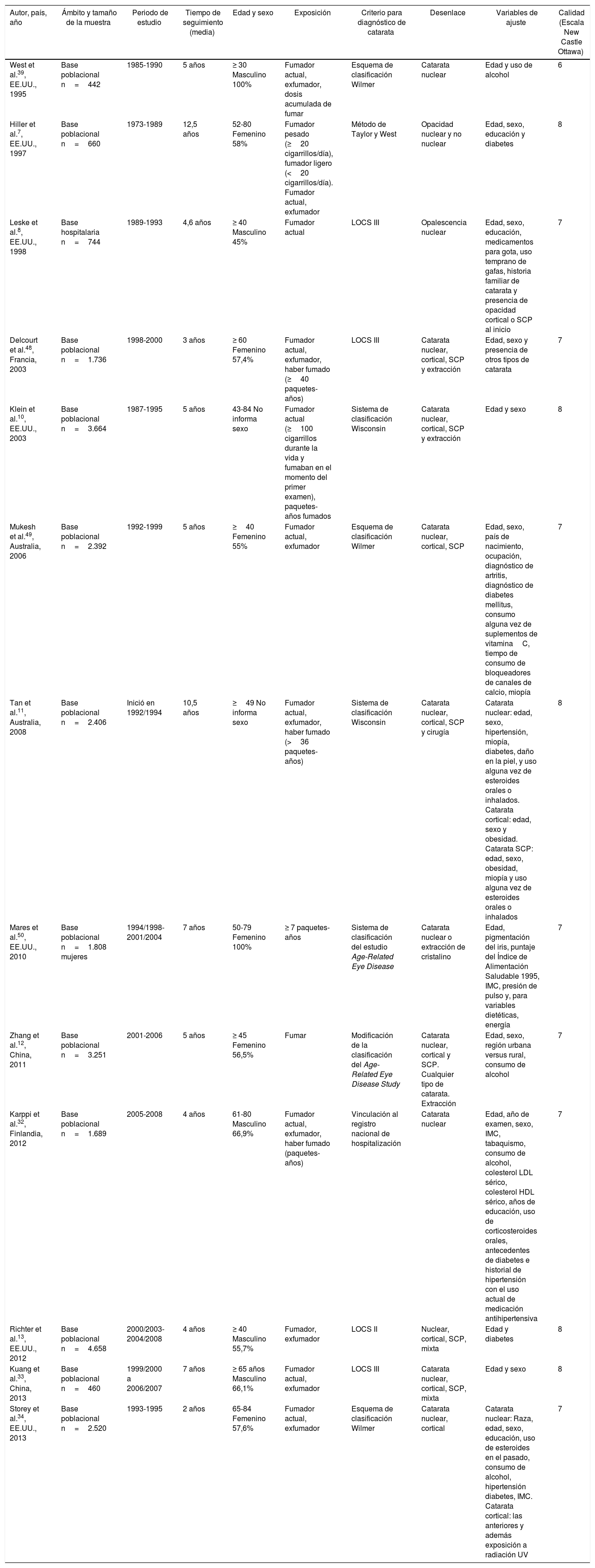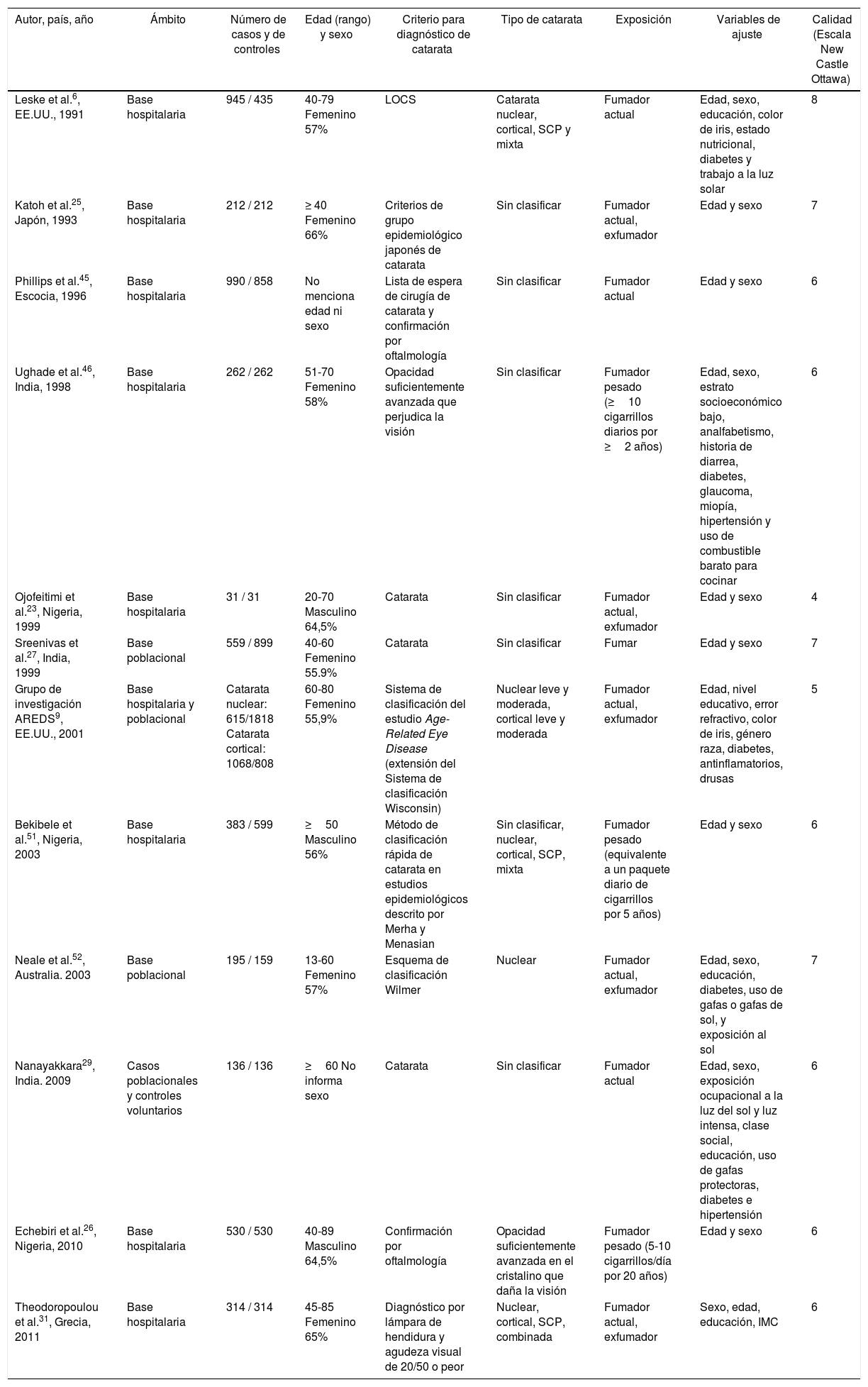El propósito del estudio fue comparar el riesgo de catarata en fumadores y exfumadores.
MétodosLa búsqueda sistemática de estudios observacionales se realizó en las bases de datos Medline, Embase y Lilacs. Se seleccionaron estudios que hubieran evaluado la asociación entre fumar cigarrillos y cualquier tipo de catarata diagnosticada clínicamente. Se extrajeron los estimadores de asociación ajustados al menos por edad y se combinaron mediante modelos de efectos aleatorios, por tipo de estudio observacional (cohorte, casos y controles y transversal), por tipo de catarata (nuclear, cortical o subcapsular posterior) y de exposición (fumador actual o exfumador). Se evaluaron heterogeneidad estadística, análisis de meta-regresión y sesgo de publicación.
ResultadosFueron seleccionados 13 estudios de cohortes, 12 de casos y controles y 18 de corte transversal. Se encontró riesgo de catarata en fumadores actuales: cohortes (OR: 1,41; IC95%: 1,24-1,60), casos y controles (OR: 1,45; IC95%: 1,08-1,96) y transversales (OR: 1,21; IC95%: 1,09-1,34) y riesgo de catarata nuclear: cohortes (OR: 1,71; IC95%: 1,47-1,98), casos y controles (OR: 1,79; IC95%: 1,43-2,25) y corte transversal (OR: 1,45; IC95%: 1,27-1,65). No se observó riesgo de catarata cortical ni subcapsular posterior en exfumadores.
ConclusionesEn fumadores existe riesgo de catarata, especialmente de tipo nuclear. Con estudios transversales se obtienen resultados similares a los obtenidos con cohortes y casos y controles.
The aim of the study was to compare the risk of cataract in smokers and ex-smokers.
MethodsA systematic search of observational studies was carried out in Medline, Embase, and Lilacs databases. Studies that have evaluated the association between cigarette smoking and any type of clinically diagnosed cataract were selected. The association estimators were extracted, adjusted at least by age, and were combined using random-effects models, by subtype of study (cohort, case control and cross sectional), subtype of cataract (nuclear, cortical, and posterior subcapsular), and exposure (current smoker or ex-smoker). Statistical heterogeneity, meta-regression analysis and publication bias were assessed.
ResultsA total of 13 cohort studies, 12 case-control studies, and 18 cross-sectional studies were selected. A risk of cataract was found in current smokers: cohort (OR: 1.41; 95%CI: 1.24-1.60), cases and controls (OR: 1.45; 95%CI: 1.08-1.96), and cross-sectional studies (OR: 1.21; 95%CI: 1.09-1.34); risk of nuclear cataract: cohort (OR: 1.71; 95%CI: 1.47-1.98), case-control (OR: 1.79; 95%CI: 1.43-2.25), and cross sectional studies (OR: 1.45; 95%CI: 1.27-1.65). There was no risk of cortical or posterior subcapsular cataract in ex-smokers.
ConclusionsThere is a risk of cataract in smokers, particularly nuclear type. With cross-sectional studies, similar results are obtained with cohorts and cases and controls.
Artículo
Comprando el artículo el PDF del mismo podrá ser descargado
Precio 19,34 €
Comprar ahora











